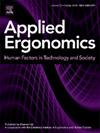No one left behind: A universal design analysis of ship evacuation
IF 3.1
2区 工程技术
Q2 ENGINEERING, INDUSTRIAL
引用次数: 0
Abstract
An accident on a passenger ferry may lead to evacuation using lifeboats or liferafts, a process that can be both complex and hazardous. This paper investigates the level of safety for passengers during evacuation based on field study and interview data. In the analysis, the eight goals of Universal Design (UD) were tailored and used to explore what ship and interior characteristics influence evacuation performance and the demands placed on the crew and passengers, and whether all passengers have equal chances of completing evacuation safely.
Results suggest that while a ship may fulfil regulation, completing an evacuation may pose challenges for passengers with varying abilities, for example, when attempting to perceive emergency information or move through the ship. In addition, it was found that an evacuation may present the crew with challenges and difficult trade-offs that are not always accounted for in the ship's design, equipment and safety organization. It is concluded that the use of a UD approach in ship design, based on a truthful representation of passenger demographics, could enhance passenger safety and provide for evacuation on equal terms.
一个都不能少船舶疏散通用设计分析
客轮上的事故可能导致使用救生艇或救生筏进行疏散,这一过程可能既复杂又危险。本文基于实地研究和访谈数据,对乘客在疏散过程中的安全水平进行了调查。结果表明,虽然船舶可能符合规定,但完成疏散可能会给不同能力的乘客带来挑战,例如,在试图感知紧急信息或在船上移动时。此外,研究还发现,疏散可能会给船员带来挑战和困难,而这些挑战和困难并不总是在船舶设计、设备和安全组织中得到考虑。研究得出结论,在船舶设计中使用基于乘客人口统计数据的 UD 方法,可以提高乘客的安全性,并提供平等的疏散条件。
本文章由计算机程序翻译,如有差异,请以英文原文为准。
求助全文
约1分钟内获得全文
求助全文
来源期刊

Applied Ergonomics
工程技术-工程:工业
CiteScore
7.50
自引率
9.40%
发文量
248
审稿时长
53 days
期刊介绍:
Applied Ergonomics is aimed at ergonomists and all those interested in applying ergonomics/human factors in the design, planning and management of technical and social systems at work or leisure. Readership is truly international with subscribers in over 50 countries. Professionals for whom Applied Ergonomics is of interest include: ergonomists, designers, industrial engineers, health and safety specialists, systems engineers, design engineers, organizational psychologists, occupational health specialists and human-computer interaction specialists.
 求助内容:
求助内容: 应助结果提醒方式:
应助结果提醒方式:


